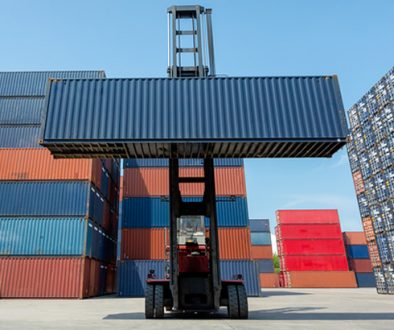Follow Their Lead
The European Shippers’ Council, supported by well-known consultants, is asking for transparent
and accurate fuel surcharges, and no “one size fits all” solutions. There is a logical argument to
be made for that approach — there isn’t one global cost for fuel by sailing; it is a function of
prices of fuel in a lane, schedule distance, steaming speed, and consumption by vessel. It’s also
affected by utilization if you establish a per-TEU or FEU charge.
What is being suggested is cost-based pricing, actually not a recent request of shippers. It is
why surcharges exist. When prices rise, they insist on knowing why. When told it is a function of
costs rising, be it fuel or a new labor contract, they say they want more transparency. They
want justification of higher prices, in detail.
A group of conference carrier senior pricing people got together in the late 1970s and over time
created a basic formula for cargo rates and surcharges. The essence was:
- A base ocean rate generally reflecting vessel and associated costs, all administrative
costs, the cost of capital, taxes, rolling stock (containers and chassis including
maintenance), systems, communications, overhead, and something for profit - Terminal charges at origin and destination to reflect costs associated with local
ports and terminals, including labor - Surcharges on cost factors that were subject to considerable fluctuation, that were
easily visible to the public, such as a currency adjustment and fuel
Looking at a container operation port to port, these are essentially the costs associated with
that service. Once you get into through intermodal services, you have to include:
- Inland transport costs to/from the origin or destination and returned to the
inland terminal or port - Inland terminal costs
- Repositioning costs for empties due to imbalanced trade lanes
Every carriers’ costs differ, and the variability is far greater than most might think. Just examine
the audited financial reports from carriers who make them public. When you calculate the
average revenue per container and the average cost per container, the combination provides
the margin per container, and those do vary greatly. What you generally see is an “operating
income” number — calculations that don’t include taxes, cost of capital, and depreciation,
which also vary by carrier.
In recent years, we’ve seen a lot of articles and heard discussion on the cost savings by larger
vessels vs. their smaller counterparts. Those numbers are real and significant. The carriers with
a significant portion of their fleet with vessels that are above 16,000 TEU have a significantly
lower vessel cost base than carriers who have few, if any, of those assets in operation.
That gets us to a dose of reality, that being that prices and surcharges are not cost-based; in a
market environment, they can’t be because the issue of competitiveness has to be considered.
The fact is that the market sets the rates, with all factors, including supply and demand, coming
into play.
My point is that the call by shippers to cost base the fuel surcharge isn’t what they really want
at all. If carriers followed their lead and did it, there would be hundreds of surcharge levels —
by carrier, by lane, and, possibly, by sailing. How would that fit into their budgeting and
forecasting? On the carriers’ side, they’d need a small army of people with a broad-reaching
process and considerable supporting systems to do the calculations daily, and then to send the
results out to the customer base. And by the way, rates and charges would go up considerably.
One other element that shippers say they want is “stability,” a known rate for a lengthy period,
likely to correspond to their budgeting cycle. But at the same time, they’ll reserve a good
percentage of their annual volume to play the spot market.
In my view, the shippers want an all-in price that is low and continues to go lower, forever. No
surcharges, no rate increases.
Guess what? A recent widely read report from Alphaliner, a large analytical and consulting firm,
says, “Inflation-adjusted freight index fell over 50 percent in last 20 years.” They’ve gotten what
they wanted from carriers.
So, what’s the problem? Why the outcry for a cost-based fuel adjustment charge? The market-
based pricing has given shippers a significant decrease in their ocean transport-related costs
over an extended period of time. Is there a thought that cost-based pricing will reduce that
further? The last seven years of financial results from the container carrier industry suggest not.
My perspective could be very wrong; the European Shippers’ Council and the large consulting
firm could be right. Let’s try cost-based pricing for a while. It may be a little messy with so many
variations, but all the new technology being developed will keep track of it all. I’m thinking that
the carriers should want to try it, they are likely to make money that way.



